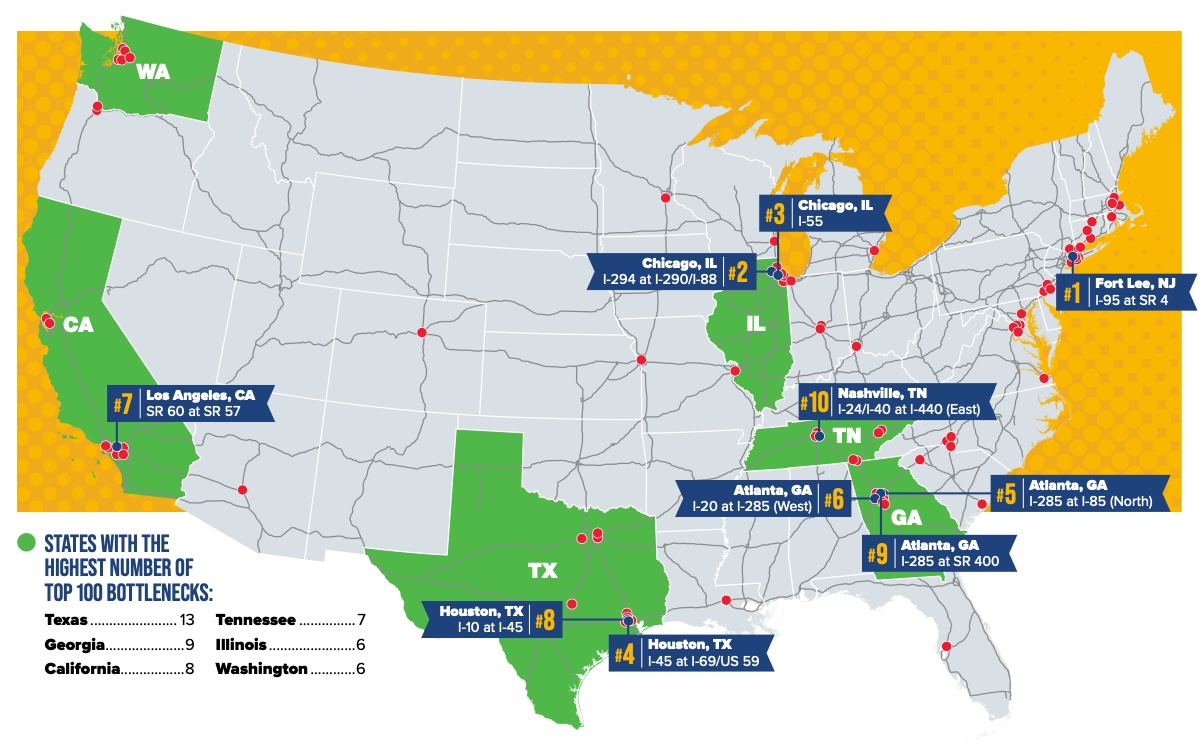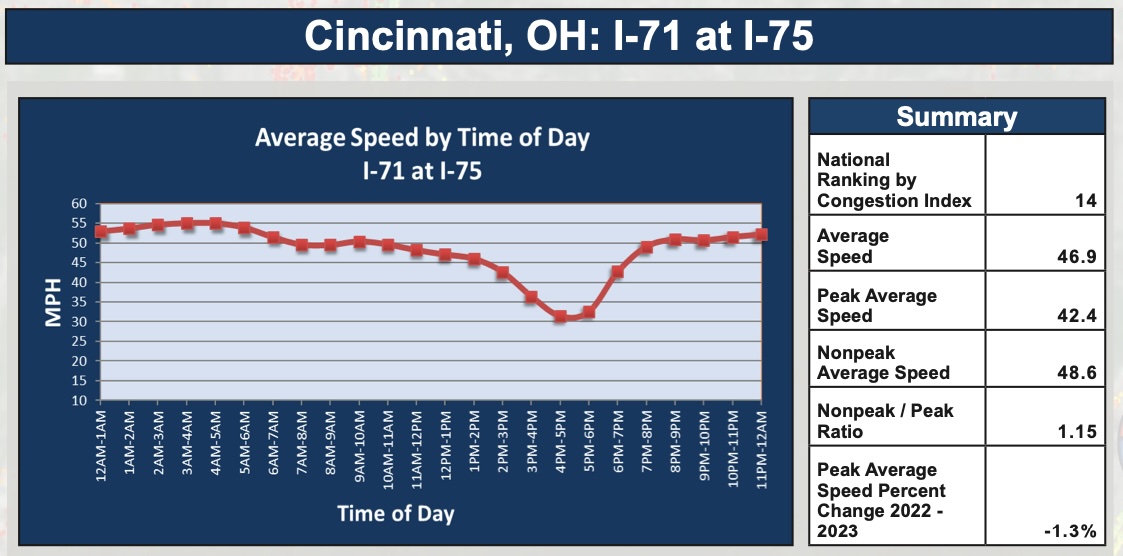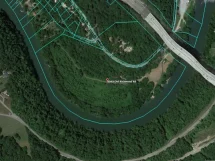 WASHINGTON — All of Kentucky’s border states with the exception of West Virginia contain top 100 truck traffic chokepoints in the United States, with Tennessee and Illinois having multiple sites, according to a list issued by the American Transportation Research Institute (ATRI)
WASHINGTON — All of Kentucky’s border states with the exception of West Virginia contain top 100 truck traffic chokepoints in the United States, with Tennessee and Illinois having multiple sites, according to a list issued by the American Transportation Research Institute (ATRI)
Kentucky has none of the top 100 U.S. traffic chokepoints, but this is because the 14th worst site, where Interstates 75 & 71 meet, is listed as being in Ohio. This is a quibble for long-frustrated users of the I75-I71 Brent Spence Bridge, which is in Kentucky because the Ohio-Kentucky legal state line is the northern bank of the Ohio River.
A multibillion-dollar project to relieve the Brent Spence is moving forward now with $1.6 billion in federal funding from the 2022 Bipartisan Infrastructure Law.
Since 2002, the ATRI has collected and processed truck GPS data in support of numerous federal and state freight mobility initiatives. ATRI develops and monitors a series of key performance measures on the nation’s freight transportation system. Among its many GPS analyses, ATRI converts its truck GPS dataset into an ongoing truck bottleneck analysis that is used to quantify the impact of traffic congestion on truck-borne freight at over 325 specific locations. While other outside analyses may identify congested corridors, no dataset available today specifically identifies granular chokepoints in the nation’s truck freight transportation system.
Measuring the performance of freight movement across our nation’s highways is critical to understanding where and at what level investments should be made. The information provided through this research empowers decision-making in both the private and public sectors by helping stakeholders better understand how congestion and delays constrain mobility on the U.S. highway transportation system. ATRI’s annual bottleneck list provides a clear roadmap to guide investment decisions as the nation capitalizes on the Infrastructure Investment and Jobs Act to address the nation’s supply chain challenges.
ATRI’s bottleneck analysis incorporates and synthesizes several unique components, including a massive database of truck GPS data at freight-significant locations throughout the U.S., and a speed/volume algorithm that quantifies the impact of congestion on truck-based freight. In addition, the annual reports provide a chronological repository of mobility profiles, allowing congestion changes to be assessed over time. This allows both transportation analysts and planners to conduct performance benchmarking and identify influential factors contributing to congestion and the requisite consequences on freight mobility.





















